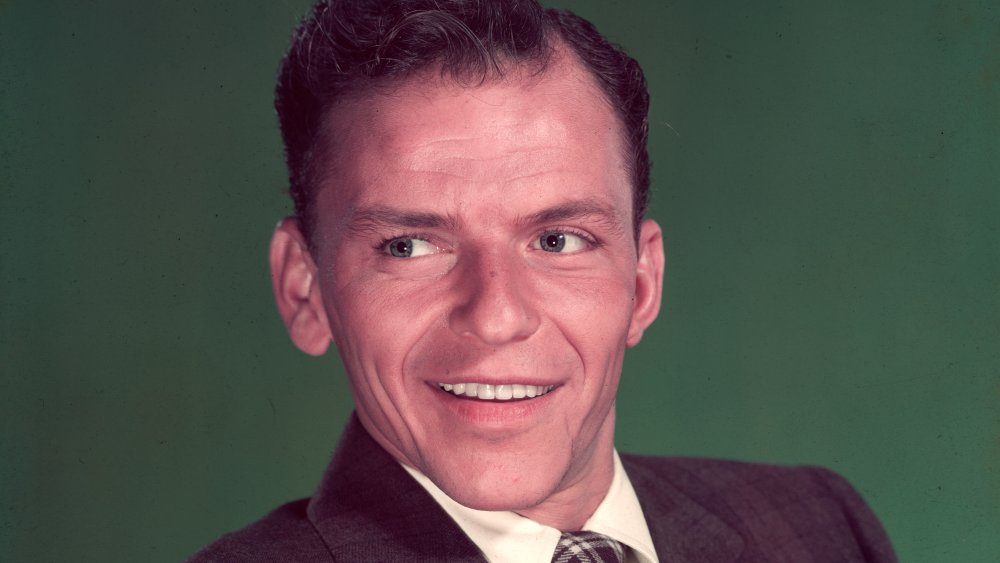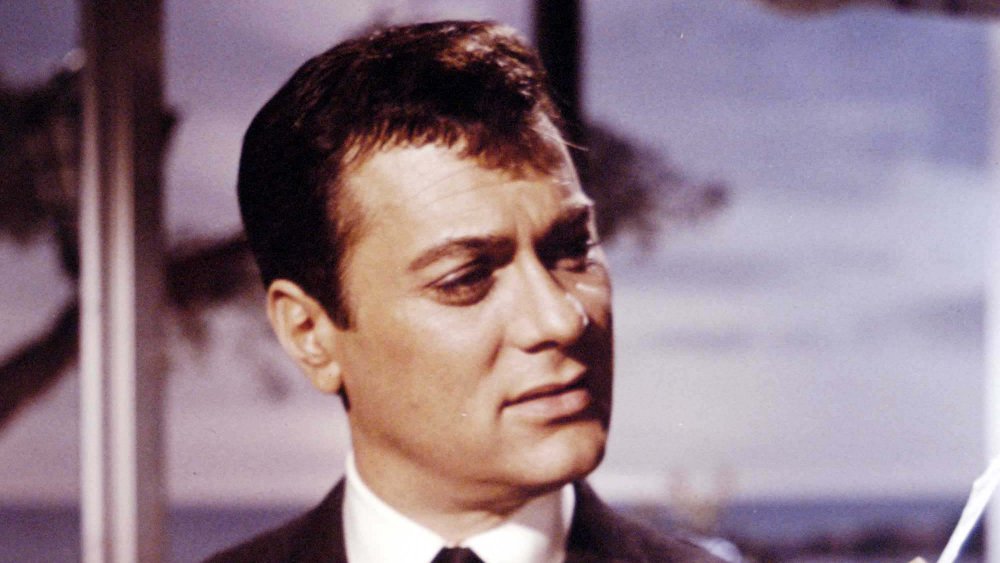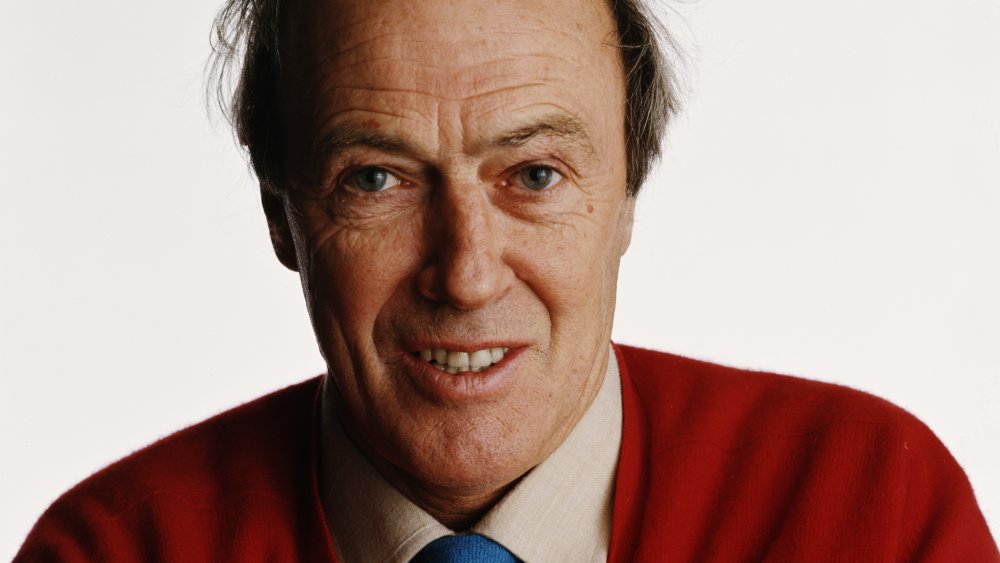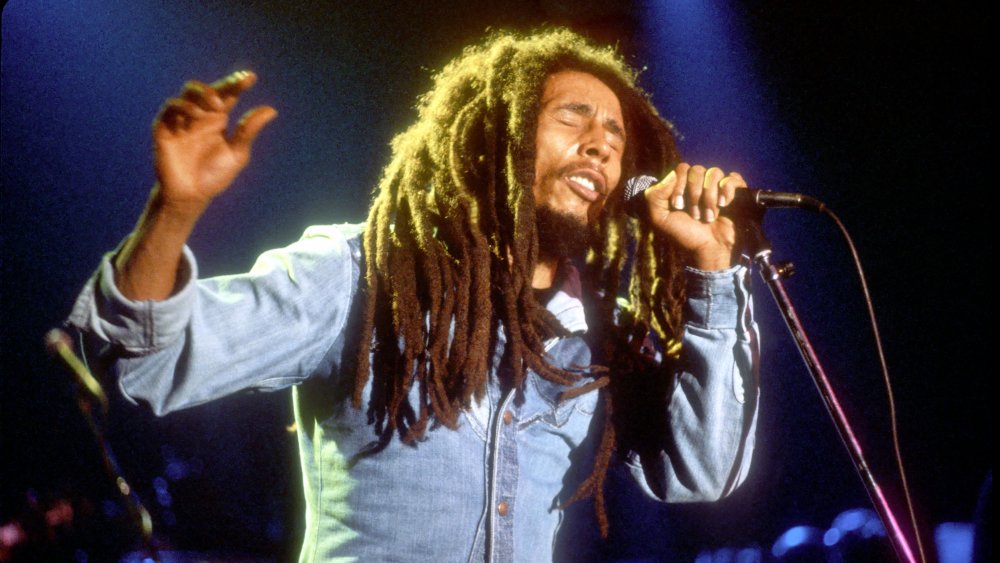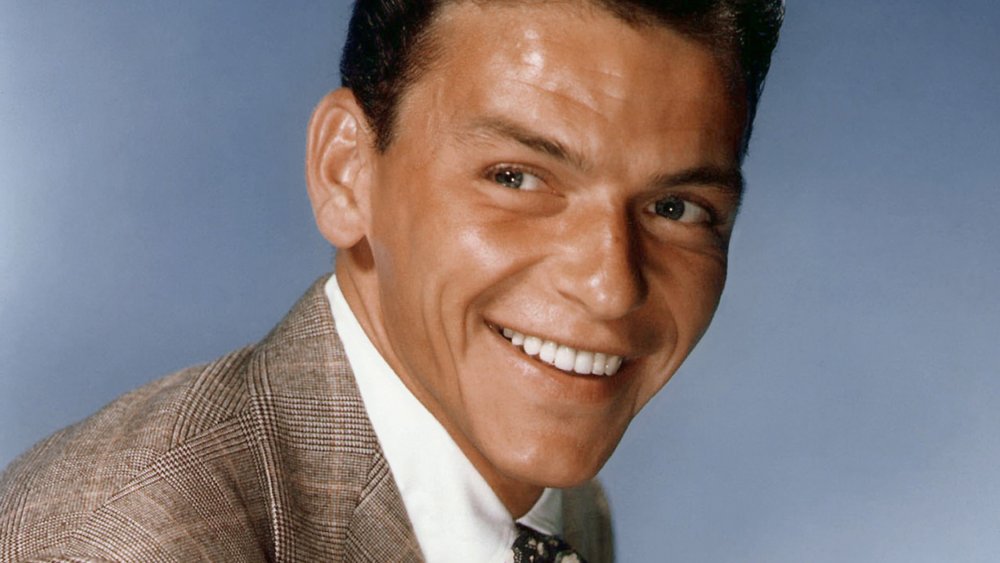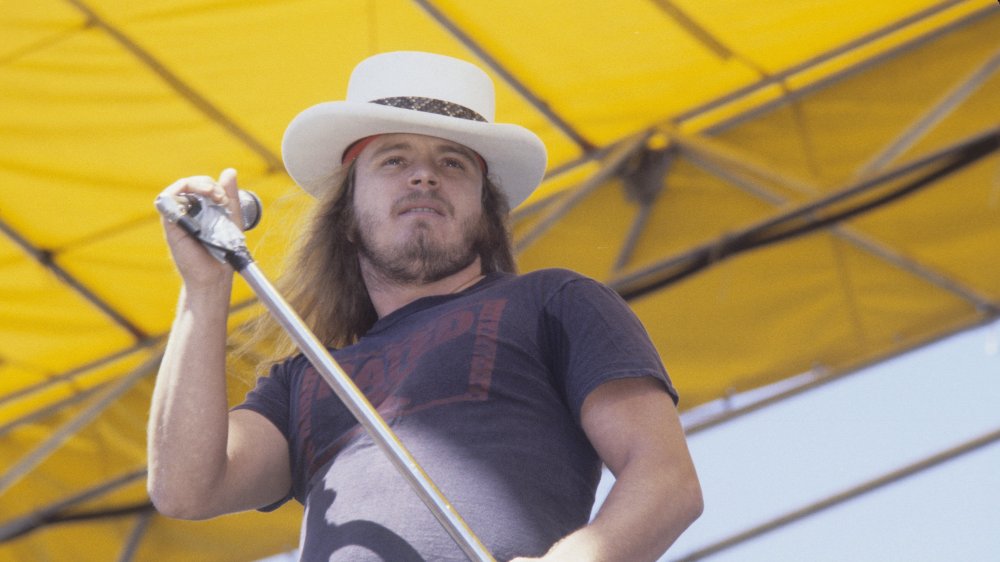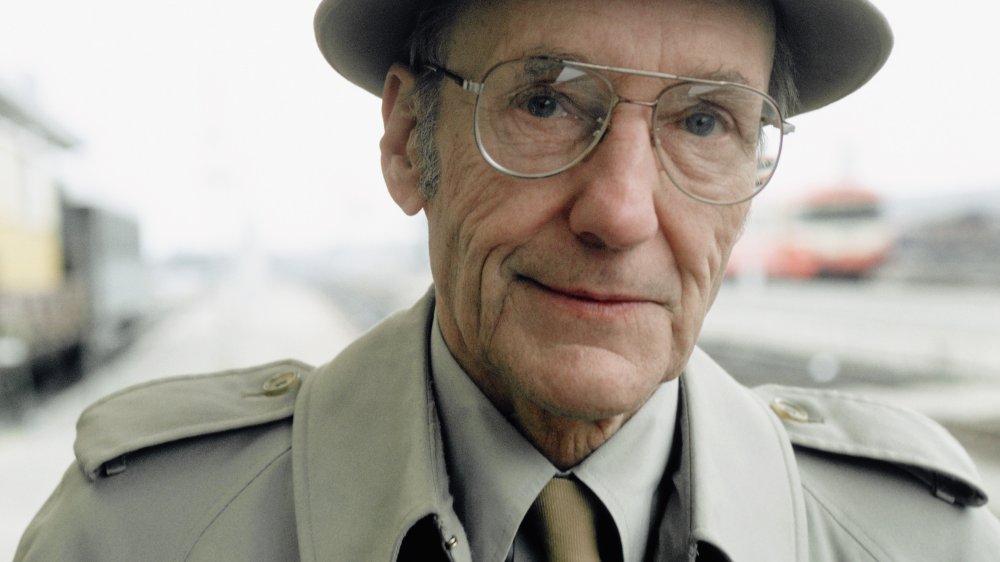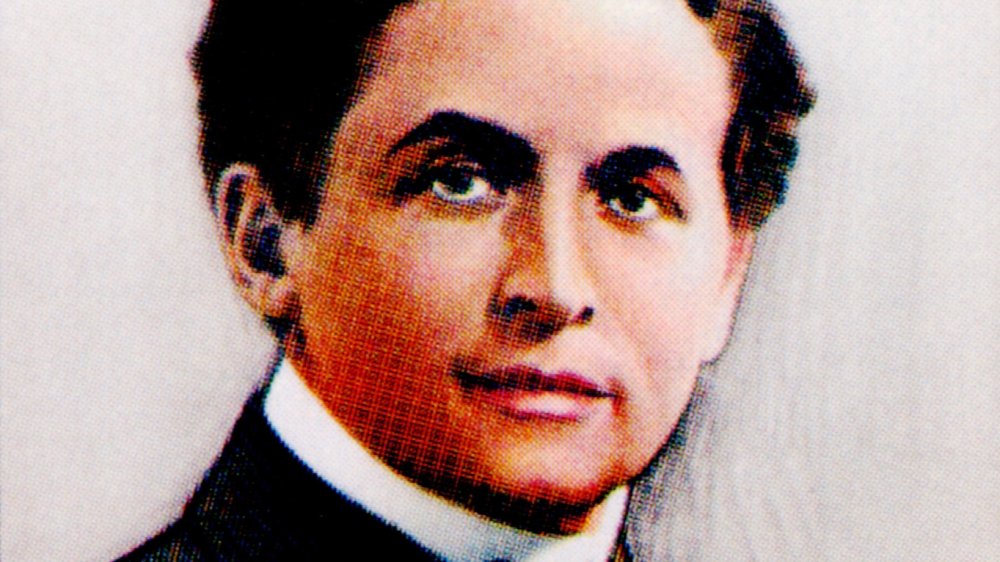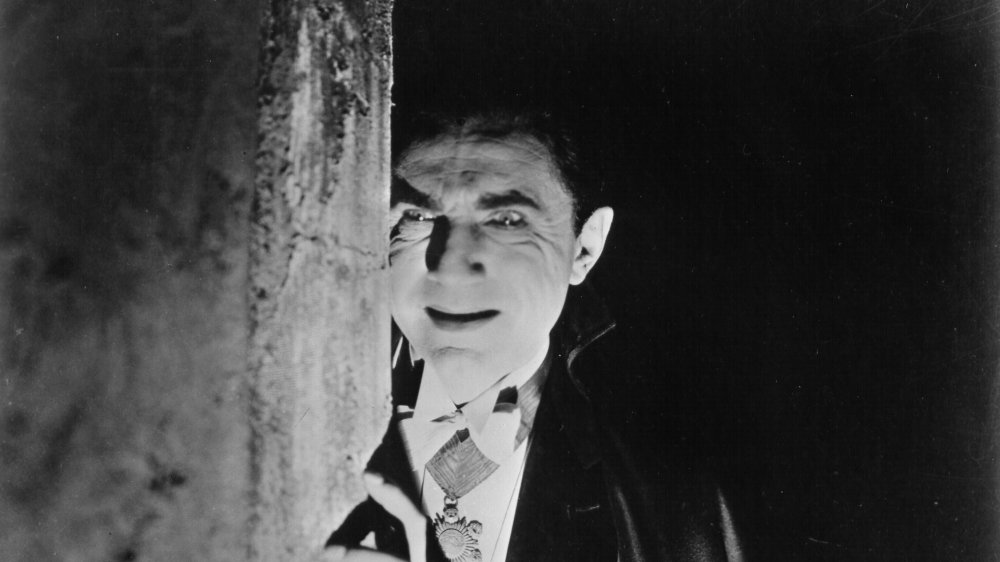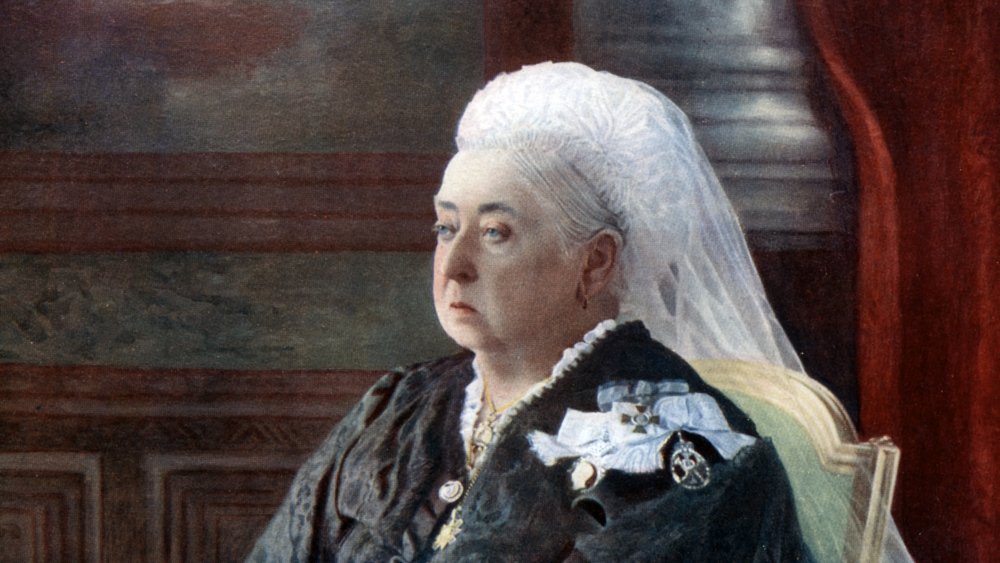Crazy Items Famous People Are Buried With
They say you can't take it with you, but that's obviously not true. Coffins have plenty of room if you want to go to the grave with all your favorite possessions. Even urns can pack some earthly goods in, especially if you burn them to ash first. And if neither of those are big enough for your afterlife storage needs, you can always go full King Tut, with multiple burial chambers full of your most essential sparkly stuff.
The idea that you can take important or meaningful items with you when you die is a comforting one. It lets you imagine that death doesn't really change anything, that somehow, you will still need all that stuff in the great beyond. Famous people are, as the tabloid insists, "just like us," so of course they want to be buried with plenty of tat, too. And since celebrities tend to be a bit odd, the stuff they pick to spend eternity with is often utterly bizarre.
Tony Curtis had one seriously crowded coffin
Hollywood icon and father of Jamie Lee Curtis, Tony Curtis died in 2010. The Las Vegas Sun reports that this must have pissed him off, since his friend Arnold Schwarzenegger said at Curtis' funeral that he was always very angry about aging and the inevitability of death. So when Curtis finally had to give in to the Grim Reaper, he tried to take all his stuff with him. Warning: one heck of a list incoming.
Curtis shared his coffin with a traveling bag full of photos and letters, a model of his car, driving gloves, some cash, his Navy medals, a pair of his grandson's baby shoes, a patch from Hungary, gold coins, two watches, a yarmulke, stones he'd picked up on his travels, a DVD of clips from his favorite films, his iPhone, sunglasses, seven packets of Splenda, a Percocet tablet, a sleep mask, his dog's ashes, paintbrushes, paints, sketchpads, and a pen. And he wore "white shorts, his much-mended favorite white sweater, an Armani scarf, and his well-worn Stetson under his arm."
While that might seem like ... a lot, the idea was that the items told the story of his life. Even the weirder ones had significance. For example, the Splenda packets honored the fact that Curtis poured the sweet stuff on everything he ate. The yarmulke was from a Hungarian synagogue he'd helped renovate. Curtis' wife Jill listed all the items in his eulogy, telling everyone what the things meant to him.
Roald Dahl is all set for DIY in heaven
The famous children's writer Roald Dahl is almost equally famous for being British. You can't really escape the overwhelming Britishness of his books. But while he was born in Wales and lived in England, his parents were Norwegian immigrants. To honor those Scandinavian roots, when Dahl died in 1990, his granddaughter arranged a Viking funeral for him.
Now, this probably doesn't mean what you're picturing when you read the words "Viking funeral." There was definitely no boat set out to sea and a flaming arrow shot from the shore, with all the mourners watching as the body and boat burned. No, Dahl has a perfectly normal grave at a church in Buckinghamshire. The Viking part seems mostly to have been about burying Dahl with a bunch of stuff, which, of course, the Vikings did like to do, but so did lots of other cultures.
According to The Vintage News, the writer was buried with his favorite HB pencils, which makes sense. The family also stuck some expensive red wine and chocolate in Dahl's coffin. That's not weird — plenty of people go out with food and drink. Things get a bit stranger with the inclusion of snooker cues, but hey, he must have been a big fan of the game. Then there was the circular power saw. Did ... did he just really love that particular saw? These days, kids place toys on Dahl's grave, but it sounds like he'd appreciate power tools much more.
Bob Marley took some ganja with him
To say Bob Marley's funeral was a big deal in Jamaica is the understatement of the century. When the musician died of cancer in 1981, he was just 36, and the country had to scramble to get everything ready for their national hero's burial. According to The Guardian, "The announcement of the country's national budget was postponed by several days to accommodate Marley's state funeral. Invitations had to be sent out, the mausoleum had to be constructed, and security had to be organized at the National Arena, where the main ceremony would be held. And the prime minister, Edward Seaga, had to prepare his eulogy." 100,000 people paraded past Marley's coffin, and his music was blasted in the streets.
(Despite all this, in 2005, it was reported that Bob Marley's widow Rita was going to have her husband's body exhumed and reburied in Ethiopia. Many legitimate outlets, including Rolling Stone, reported this as if it were a done deal, but it never happened. As of 2020, Marley is still in Jamaica.)
Marley was buried wearing a wig of dreadlocks, since he'd lost all his hair during the cancer treatments. His coffin contained his red Gibson Les Paul guitar, a Bible opened to Psalm 23, and a stalk of marijuana, lovingly placed there by his widow at the end of the funeral service. Since Marley was a Rastafarian, the weed had religious significance. And anyway, it's no different than all the people buried with alcohol.
Frank Sinatra is ready for a party or a kidnapping
Frank Sinatra was a larger-than-life entertainer, but even a life that big has to end sometime. For Ol' Blue Eyes, that time was 1998, but he went into the ground the same old Frank and brought the goods to make sure of it. His iconic image wasn't about to change just because he died.
Sinatra always drank whiskey when he performed onstage, a very specific whiskey served a very specific way: Jack Daniels, "three rocks, two fingers, and a splash of water." It was such a mainstay of his performances that years after he died, Jack Daniels built an ad campaign around his love for their product ... and the fact that he took a bottle of Jack to the grave with him. Sinatra was also a heavy smoker, so his coffin contained the necessary pack of Camels and a Zippo lighter, presumably in case heaven has looser rules about where you can light up.
Sinatra was also buried with ten dimes. He'd carried change on him for decades, in case he ever needed to make a phone call (he died before cell phones were common), but the root of this obsession was much sadder. In 1963, Sinatra's son, Frank Jr., was kidnapped and only released after the singer paid a ransom. Sinatra's daughter said that after that, her father always wanted to make sure he had the money to make a phone call if he needed to.
Ronnie Van Zant might be getting use out of his fishing rod
Everything about Lynyrd Skynyrd frontman Ronnie Van Zant's death was pretty creepy, so it's no surprise his afterlife is, too, by way of his burial. Van Zant often proclaimed he wouldn't live to see 30. Eighty-seven days before that milestone birthday, he died in a plane crash, along with other members of his band and crew. According to Louder, soundman Kevin Elson — who survived the crash — later said that "everyone was sort of wary" about the rickety plane they were flying on, and looking back, "all the signs were there" that a disaster was going to happen.
A keen fisherman, Van Zant was buried with a yellow fishing pole. A lovely and fitting tribute to his favorite hobby, sending him off with the pole was probably more a way for his family to think his death hadn't changed anything, that somewhere, Ronnie was still having a great time catching fish.
That might be more likely than you think. Numerous people have claimed they've seen Van Zant's ghost near Lake Delancy in northern Florida. The lake was one of his favorite fishing spots, and witnesses say that his spirit is still there, "dressed in black and striding purposely [sic] towards the water with the yellow cane fishing pole he was buried with tucked under his right arm." Considering that Van Zant's widow Judy believes he appeared to her about six months after he died, maybe Ronnie is still hanging out in this realm, catching plenty of fish.
William S. Burroughs was armed and dangerous
Author William S. Burroughs was ... different. Part of the Beat movement, he was friends with Jack Kerouac and Allen Ginsberg. Most famous for the novel Naked Lunch, Encyclopedia Britannica says Burroughs' writing was experimental, full of "deliberately erratic prose," sexually explicit, and evoked "a nightmarish, sometimes wildly humorous world." A heroin addict, he also wrote frankly about his drug use.
Despite being an out-and-proud homosexual, Burroughs married twice. He lived everywhere from Mexico, to Paris, to the Amazon region, to Morocco, before finally settling in Kansas, like you do after living a crazy counterculture lifestyle for decades. He died there in 1997.
Burroughs was buried in his family plot in Missouri. Smithsonian Magazine reports that he was allegedly laid to rest along with a fedora, a joint, and a sword cane. Now, that is all very cool. We can all only hope to live a life awesome enough that we can pull off being buried with a sword cane. But the strangest item was a loaded .38-caliber revolver. Now, lots of people like guns. But Burroughs had one hell of a history with them. In 1951, he was in Mexico City with his second wife, Joan Voller. A drunken game resulted in him shooting her dead. Burroughs was convicted of manslaughter, and her death haunted him for the rest of his life. So psychiatrists could probably have a field day with his decision to be buried with a loaded weapon.
Arch West got a fitting and delicious tribute
Coffins are very convenient if you want to be buried with a bunch of stuff. They're pretty roomy, and anything that fits is fair game. It's a little harder to bring your prized possessions if you choose to be cremated. Urns are relatively tiny. Sure, you could burn the desired items to ashes along with your body, unless they are on the list of no-nos, like cell phones, anything made of latex, or booze. (These things can lead to a tiny issue called "burning down the crematorium.") And many businesses, especially in America, won't allow you to burn anything at all except the body.
But fear not, because you can still have fun with your interment if you choose cremation, as demonstrated by Arch West. You're probably not familiar with his name, but you are definitely familiar with his claim to fame: West was the inventor of Doritos. And the snack chip obviously didn't do his health any harm, because he died at the ripe old age of 97 in 2011.
Before interring his urn, friends and family tossed Doritos into the burial box. West hadn't actually asked for this honor, but his daughter assured Reuters that her father would have found it "hilarious." And the cemetery didn't have a problem with the idea, either, since the chips are biodegradable. So West's loved ones threw Doritos around the urn, just like one would throw dirt on a coffin at a more boring funeral.
Sandra West went out in style
Sandra West was a wealthy Beverly Hills socialite who had the good sense to marry a Texas oil tycoon and then outlive him. She inherited millions and enjoyed spending that money on jewelry, stamp collecting, and a solid gold fishing reel, according to My San Antonio. But there was only one material possession she wanted to take with her to the grave, and that was one of her many fancy sports cars.
Five years before West died of a prescription drug overdose in 1977, she wrote a will requesting to be buried "next to my husband in my lace nightgown [...] and in my Ferrari with the seat slanted comfortably." Because when you're rich, you can do whatever you want, her bizarre wish was duly granted.
One way to get a lot of people to show up at your funeral is to be buried in something absolutely ridiculous. Despite funeral director Porter Loring saying he tried to keep the funeral "as unsensational as possible," about 300 curious onlookers and reporters with no connection to Sandra West showed up at the cemetery for her burial and watched as a crane — trying not to crush any tombstones — picked up a large box containing the car with Mrs. West comfortably seated inside and lowered it into a grave that was 19 feet long, 10 feet wide, and 9 feet deep. To deter any graverobbers who might be foolhardy enough to try, the whole thing was then encased in concrete.
Harry Houdini isn't trying to escape the grave
Harry Houdini made plans for his burial more than 11 years before he died. He was only 40 when he wrote out his last wishes, but considering how dangerous his job was, that was probably pretty late. According to The University of Texas at Austin, Houdini requested that all the letters he'd saved from his mother (with whom he had a very close relationship) be bundled together and made into a pillow for his head in his coffin. Oh, and he did ask that a single letter from his wife be included, too.
But a 1926 article in The New York Times (via Houdini Museum) records an even weirder request he made. Houdini hadn't asked to be buried in just any coffin but one he'd had specially made for an odd trick. There was no escapology involved with the airtight bronze coffin — instead, Houdini used it to prove that "any one could live without air for an hour if they did not let fear overcome them." Of course, by the time he needed it, the air wouldn't be important anymore.
While Houdini was a staunch skeptic when it came to the supernatural, he did put great stock in coincidences. And it was a strange one indeed that the coffin had been left behind in Detroit for a week after Houdini's show closed, rather than being shipped to New York with all the other props, so it was conveniently on hand when he died unexpectedly.
Bela Lugosi went to the grave as the most famous undead character ever
Bela Lugosi appeared in more than 100 films, according to The Vintage News, not to mention a huge number of stage roles before he went all Hollywood. Despite that fact, he would forever be known as Dracula. Lugosi was 48 years old, with more than half of his acting career behind him, when he was cast in the film version, but it would define him for the rest of his life.
And, as it turned out, his afterlife. Bela Lugosi's next of kin were his only child, Bela Lugosi Jr., and his wife, Hope Lininger. (Lininger, who was Lugosi's fifth wife, was not Junior's mother. That was the actor's fourth wife, Lillian Arch. The man got around.) After Lugosi died in 1956, the pair requested that he be laid to rest in his Dracula cape. Not the Dracula cape, mind you, but a replica. The son held on to the real one and tried to auction it off in 2011, but with a starting price of $1.2 million, it failed to sell.
Bela Lugosi was far from the only person to be buried in one of their iconic looks. Reuters reports that Michael Jackson went to the great beyond wearing shades and a single white glove. And in 1980, The New York Times reported that Kentucky Fried Chicken's colonel, Harland Sanders, was laid to rest dressed in the double-breasted white suit he wore in ads for his restaurant chain.
Queen Victoria had loved two men
Queen Victoria died in 1901, but she was old enough to know it was coming, and she was prepared. Meticulously prepared. The list of items she wanted to be buried with ran to 12 pages long, according to The Vintage News. But it was to her physician, Dr. James Reid, that she entrusted this list, and the orders that it be followed to the letter. Her children, six of whom were still alive, were not allowed to know those particular wishes, because they would not have approved. So what could be so bad that it would scandalize Victoria's kids?
At first glance, nothing. The woman who had wore black for 40 years after her husband died unsurprisingly wanted to be buried with lots of his stuff. She took to the grave Prince Alfred's dressing gown, one of his cloaks, and a plaster cast of his hand, along with her wedding veil. So far, so chaste.
Then there was the stuff belonging to a guy the queen had never been married to. John Brown had been her servant, but they formed a close bond after Albert died. Victoria's children hated this Scotsman who their mother had seemingly fallen for. In her coffin, obscured by flowers, were items like a lock of Brown's hair, his photo, and a ring he'd given her that once belonged to his mother. While this seems sweet today, her children would have been apoplectic had they known, hence the good doctor keeping them in the dark.
